Text
PepeDiary update n. 1
Red Dead Redemption 2 review coming soon!
0 notes
Text
Harvest Moon: A Wonderful Life Review
Warning: Includes major spoilers for the story of the game, although, it’s been 16 years, you have had your chance to play it.
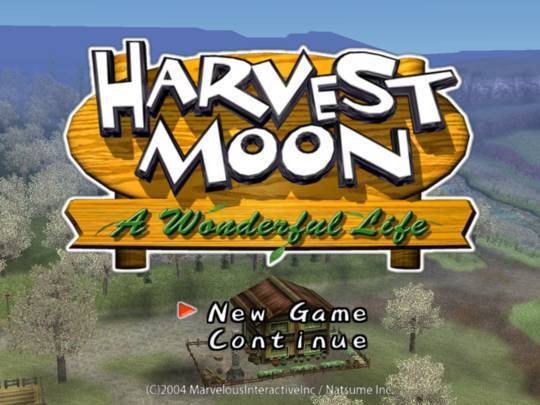
When I was a child, my father bought me a Nintendo Gamecube. I was too young to understand anything about the games as I didn't speak any English, but I remember enjoying endlessly watching my sister play games on it. One of those games was Harvest Moon: A Wonderful life, and to this day it remains as one of the most nostalgic games to me. When I got older, I replayed it and fell in love with it even more, but there was always something so fascinating to me about this game. I wonder how it managed to capture my heart despite my dumb child brain not even understanding what it was about. Now, as an adult, I hope to take a more critical look into this game from my childhood and what made it so different from the other Harvest Moon games for me, aside from the nostalgia.
Harvest Moon: A Wonderful Life was published in 2004 for Nintendo Gamecube by Natsume and developed by Marvelous Interactive. In 2005 it got a special edition release on the Playstation 2 and the special edition port was later re-released on the Playstation 3 and Playstation 4. There was also a version with a playable female lead called Harvest Moon: Another Wonderful Life that was released in 2005 and its only difference from the original was the player character's gender and marriage candidates to choose from.
Harvest Moon Game play With a Twist
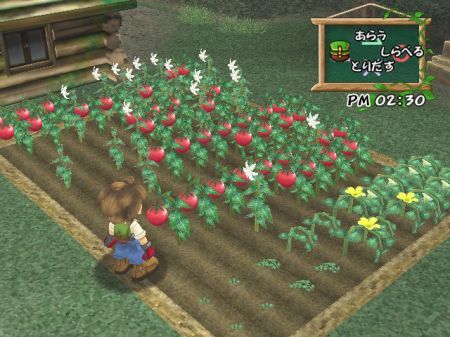
(Source: Harvest Moon Wiki)
Harvest Moon: A Wonderful Life offers the player two save files and is, as expected, a farming simulator. This means the players basic game play consists of watering and fertilizing crops, taking care of farm animals and trying to earn money to upgrade your old plot of land. As in other games in the series, certain crops only grow during certain seasons, and aside from farming, the player can visit the small town of Forget-Me-Not-Valley to get to know its residents. While the game play follows the same formula as most farming simulators, A Wonderful Life proves to be a bit more difficult due to its connection to realism. No matter which way the player prefers to go, both farming and ranching require a lot of effort and time from the player, not to mention money. In the beginning, the player is already offered a farm with a barn, chicken coop and three fields for farming, along with a cow to help them get started. However, since all necessary buildings are already in place, there is no way to upgrade the space or layout of the farm, meaning the player must work with what they are given. This means limited barn space and understanding of how the different soil types of the fields work instead of just planting whatever comes to mind during the seasons.
The game also encourages the player to choose between animals and crops. While it is possible to use both, completely devoting themselves to one is more rewarded in game play. Cows have several different species in the game, some producing more profitable products than others and naturally selling for more than a regular cow. Unlike in other Harvest Moon games, there is also a male counterpart for chickens and cows. A rooster and a bull are needed in order for the animals to reproduce and the player can either invest in their own bull to cut down fees or pay for a Miracle Potion meaning another farm's bull is used. The cows also don't give milk or stop giving milk if they aren't impregnated regularly, a feature that does not exist in other games in the series.
If planting is more to the player's taste, they have to be ready to invest in fertilizer and better watering cans. While the basic idea of buying seeds and planting them is present, the player can also invest in their own seed maker and create hybrid crops by befriending a talking plant in their neighbor's house. The more the player invests in creating their own seeds and raising their quality, the more profit can be gained from farming. Nevertheless, both farming and ranching have their own set of new challenges, and instead of upgrading their space, the upgrades mainly focus on bettering the original products like making milk into cheese or using quality crops to make quality seeds.
The more difficult and realistic aspects of the game are mostly a hit-or-miss. The more devout fans of the series might not appreciate the added difficulty taking away the simplistic game play of other Harvest Moon games. On the other hand, it can be fun to try something different for once, even though earning money for upgrades is more difficult. There is also a lack of several other usual Harvest Moon activities, such as mining and festivals. Instead, mining is replaced with the excavation site, that offers ancient fossils and crystals instead of gems and festivals are more like small events. This means no cow festivals or chicken festivals that, up by then, had been a very huge part of the Harvest Moon franchise. Other notable differences are that the seasons now only take 10 days to change and that the game is split into chapters, with some chapters having requirements. If said requirements (marriage in the first year for example) are not met, the game ends.
All in all, while there is a lot of good, the most frustrating mechanic is how long it takes to complete the game. In the original version, it takes 20 in-game years for it to reach the end. The special edition fixed this by lowering the needed years to fifteen, but even so, it can be hard to keep interest for long periods of time, as the game mechanic very much compliments the game's themes. This means that even though every day is meaningful in some way at the end, it can feel boring to go through them, running the same errands without any certain festivals or events to look forward to. This doesn't mean the game lacks content, but rather that the content is very much hidden and that there are no simple tutorials on how to reach it. Most of the game play outside of farming or ranching is trial-and-error based and requires the player to search for events and what the characters enjoy. It doesn't help that the relationship meters of all characters aside from the marriage candidates are hidden, so the player has to guess how close they are with the villagers.
The Story is A Lot Darker
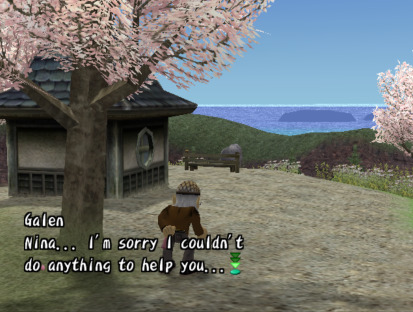
A Wonderful Life aims to be more realistic in game play, and thus, ends up being a bit darker with its themes too. Like the title suggests, the main goal of the game is to live a so-called "wonderful life" and uncommon for a Harvest Moon game, A Wonderful Life has a story attached to it, and the story is most defiantly the game's biggest strength. Each chapter of the story progresses the player character's life, all the way to his death, and all the choices the player makes during their life finally come together at the end.
What A Wonderful Life is going for is a lot different from the staple of the series, but it also makes the game feel more alive. The town of Forget-Me-Not-Valley does not have many villagers nor marriage candidates, but what it lacks in quantity, it makes up for in quality. The residents, along with the player character, grow older with time and depending on who you marry, befriend or choose not to befriend, changes what kind of events you can encounter each chapter. The amount of events very much replaces the lack of festivals as relationships with other characters feel meaningful and alive. I have personally played through the game many times and there are still a lot of events that I have not seen. Seeing them is not necessary to complete the game, aside from the heart events of the marriage candidates, but encountering them really feels rewarding, because it feels like being a part of the community.
The most perfect way to describe A Wonderful Life's story is "bittersweet". Getting to know the residents is surely rewarding and hearing them comment on gifts that they received from the player a day earlier is nice, but the game also makes it very clear that everyone has their own set of issues in life. Everyone has regrets and how all you can do is to try to live your best life with the choices you make. This feeling is perhaps the most apparent in who the player chooses to marry. In the original A Wonderful Life, there are 3 marriage candidates with a 4th added in the special edition. Each of them benefits from the player marrying them, with one getting out of a loveless arranged marriage, one receiving a home and third fulfilling her dream of having a family as an aging bachelorette. Whoever the player chooses, they have to see how this negatively affects the other two, who most likely never receive what they wish for.
An odd addition to marriage is also the fact that neglecting the relationship with the chosen wife and child leads to long consequences. In the worst case scenario, the wife will divorce the player and the game will end and in some milder examples, the player's child might end up hating them for being an absent parent. In A Wonderful Life, it matters what the player chooses to do with their relationships. The friends the player makes influence their child and what the child does when the game ends. In the original version, the player can only have a son, but the special edition gives an option to have a daughter.
If the player also has a copy of the GameBoy Advance game Harvest Moon: Friends of Mineral Town, they can connect between the two, leading to the villagers commenting things about mineral town and bringing special goods with them. This can be a very nice feature for returning players of the series. Unfortunately, I did not have access to said feature so I cannot comment on it more personally.
Forget-Me-Not-Valley is Beautiful

The open world of Harvest Moon: A Wonderful Life is not very big, but it feels homely. The town of Forget-Me-Not-Valley is covered in earthy tones and the lack of music actually works well for the game's benefit. While the graphics in the original version for Nintendo Gamecube are not top notch and you can see the game's age, the re-release on PS3 and PS4 cleared them a lot, making the world come across as beautiful as it was meant to in the first place.
As far as Harvest Moon games go, A Wonderful Life is certainly not the most colorful, but it has its own charm. The town takes after a rural Japanese town, with most houses being rustic and brown, and nature being the most attractive piece of it. Being in 3D, the player has an excellent view of the sky at any times during the day, and the game very realistically has a cycle, meaning fresh sunrises and warm sunsets, along with a sparkling sky of stars and grey clouds when it rains. Fitting to its world, the weather might change in the middle of the day and it might snow in the final days of Autumn, as in real life.
These changes make a big difference in the atmosphere of the game. They compliment its themes and story, and even if there isn't a large area to explore, there are certainly many things to find. The valley's colors change each season and it is worthwhile to explore the same places during different times of day and year. The lack of music compliments the rural, peaceful aesthetic, as it makes it easier to hear the ambient sounds that change depending on which area of the valley is being explored. At the beach, the sea can be heard slowly crashing against the hills, and in the forest birds are singing. All villagers have a signature sounds they make when talked to, giving them their own voice and making them feel real. The only area with music are the homes of other villagers and the player's farm. The player can unlock different records by playing and customize what kind of music they want on their farm or if they prefer no music at all, they can remove the record.
To put it lightly, A Wonderful Life has its own idea of an aesthetic and it sticks to it all the way down to sound design. Once again, it is more of a preference question on what the player likes, but having it any other way would defiantly break the feeling the game is going for.
Verdict
While in no ways a perfect game, Harvest Moon: A Wonderful Life has a goal and is successful in portraying it. Despite being an old game, its story has aged well and never fails to be relevant, as life may change from the outside, but at its core it will always have the same questions lying beneath. The graphics on the other hand do look a bit outdated for today's standards, yet can be overlooked and even be seen as charming to some. Other frustrating traits it has is its slow and repetitive game play, that ironically compliments the game's story, but fails to be engaging for long periods at a time. Still, the game is worth experiencing, even for players not familiar to the Harvest Moon series, for the exact reason that it is so different from the entries in the series.
5 notes
·
View notes
Text
Stardew Valley: A Charming Review
Warning: Very, very mild spoilers for the story, but otherwise quite spoiler free. Written 3.3.2020
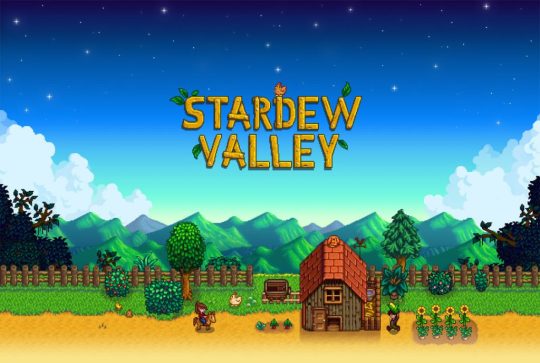
I have always had a weak spot for video games that feel like home. Sometimes you just want to play a game without getting an adrenaline rush with every move you make. So, naturally, when I found a game a game that took inspiration from the Harvest Moon series, one of my childhood favorites, I was sold solely for the idea. What I got instead was even better than I had dreamed of, but in a different way.
Stardew Valley is a 16-bit pixel art RPG farming simulator game that was released in 2016 by its sole developer Eric "ConcernedApe" Barone, and published by Chucklefish. It has since been improved and gotten new features over the years, with the most recent big update being 1.4 that added several new interactions and gameplay elements in 2019. In-game, you take the role of a young farmer who has grown tired of their work in a big corporation in an even bigger city and decides to move to their grandfather's old farm to start a new life in Pelican Town, Stardew Valley.
Relaxing Gameplay

When you start a new save in Stardew Valley, you are offered a choice from 6 different farms. Each of these farms represents a certain gameplay element in the game, with some encouraging farming and ranching, while others show what other activities the player can immerse themselves in. Even though you are a farmer in the world of Stardew Valley, you do not need to limit yourself to watering crops every day, but instead you can spend your time honing your fishing skills for a relaxing waiting game, or if you are feeling more adventurous, exploring the deep abandoned mines crawling with monsters. No matter what you choose, you are sure to find it rewarding every time you find something you have not seen before.
The main skills the player have are farming, foraging, mining, fishing and combat. Each of them have a level meter going up to 10, that at certain intervals allows you to choose special effects for your character and unlock crafting recipes, either to customize your farm with nice structures like paths or fences, or items that help you in the areas of that specific skill, like special buff clothing for combat. Maxing out these skills is simple: you do the activity that the skill is for.
There is a certain kind of difficulty curve in all of these activities that keeps it interesting even after you have reached the maximum level. Stardew Valley keeps record of all the things you have found, making it oddly satisfying to browse through a complete collection of fishes or gems that you have managed to find during your play. Of course, obtaining all items will not be easy, as there are specific requirements for the rare items, like the legendary fish that only spawn in a specific location at a specific time of year, or gems that only spawn with extremely good luck and courage to go deep enough into the more dangerous mines. It is safe to say that even if the player is only playing Stardew Valley for its gameplay, it will not immediately run out of content for a true completionist.
Since the game uses 16-bit pixel graphics, it runs smoothly but is also limited to a certain controls. Often it balances this, like in fishing, where there is an added mini game to make it a little less boring to wait for a fish to bite. However, the controls of said mini game have frustrated many players, and has been divisive among the players. Personally, I found it a bit clunky, but then again, the same could be said about combat that I did enjoy. An element from the Harvest Moon sister series Rune Factory, combat in 16-bit pixels is not very astonishing. It mainly consists of the player using different weapons to hit enemies while standing still. The different weapons have different effects, but using anything other than a sword due to its speed and strength defeats the purpose, as the other weapons do not compare or using them feels rather redundant. There is also some problems with time and settings that some players may find frustrating. A year in-game has four seasons, Spring, Summer, Autumn and Winter, each consisting of 28 days with 20 in-game hours. To farmers and fishers, waiting for seasons to change in order to raise new crops or obtain new fish can be boring, but this can be balanced by the mechanic of going to sleep and skipping the day. The opposite problem though, the lack of time, is harder to fix. Unlike some Harvest Moon games, Stardew Valley forces the player to pass out after 2 A.M. While this is for the reason that the game can save the progress for that day, I often found myself annoyed by how little time I had to mine in a day. After reaching a certain level in mining, the more challenging mine becomes available only after 10 A.M, meaning the game leaves the player with twelve in-game hours to mine, and passing out in the mines would not be a problem, if the game did not actively punish the player for it. Every time the player passes out without getting to bed, they may lose money or some items the next morning. Understandably this adds difficulty, but more often than not it just feels like an unnecessary limitation.
Another, a more personal and a quality of life kind of aspect I hoped the game would have, is the changing of brightness. Stardew Valley has a fixed brightness in-game and it cannot be changed, so to people with sensitive eyes this can cause problems. Some have also complained about the lack of instructions the game has for its activities, but to an old Harvest Moon player like myself, this was not a problem as older games rarely gave any instructions to what to do. It very much depends on the player if they like to find out things via trial and error or if they prefer to think before they act.
The Charming Characters Bring Life to the Game
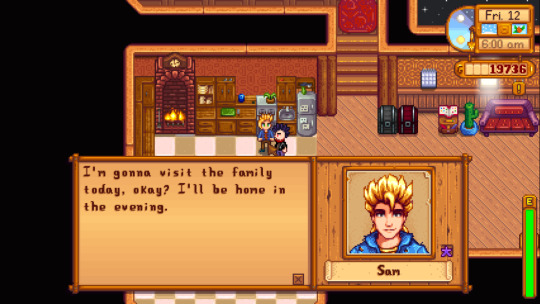
The most relaxing aspect I found in Stardew Valley was getting to know all the villagers of Pelican Town. There is something oddly human about these small pixel people and hearing their dreams, regrets and joys feels like you are truly helping someone. Stardew Valley is a dream for someone who wishes they could help everyone, as the player character tends to fix a lot of the problems the town is going through. The story is, in fact, all about getting invested in the little Pelican Town and its residents, helping them re-build their community center and restore the spirit they had before a big corporation market JojaMart came into town. Or, if the player so wishes, just to buy a JojaMart membership and buy their way through community updates.
Stardew Valley's main story is simple and does not get that much in the way of gameplay and the player is in no rush to play through it. The more rewarding story aspect is getting to know your neighbors, with each having their own story events to play through to find out about more of them. Among regular neighbors, there are also love 12 love interests, 6 men and 6 women. It does not matter which gender the player chooses, as Stardew Valley offers the option of same-sex marriage. Naturally, the love interests have more events than regular villagers, but even then, it is always nice to see events with characters you see as your friends. In the Harvest Moon series, I always felt sad about how the non-marriage candidate characters had almost no events to show your friendship with them. When I played Stardew Valley and noticed a pattern in the villagers actually interacting with you in events, I felt immense joy even over the platonic relationships in-game.
Unlike Harvest Moon, that hails from Japan, Stardew Valley sometimes resonates more with me due to its Western culture influence. It is surprisingly mature, with themes like alcoholism, depression and capitalism and their effects on people. Stardew Valley's characters feel alive due to their complex feelings on the issues going on in their life. Of course, getting to know them on the there hand might break this illusion of connection as the main way for the silent protagonist to bribe these people to love them is to give gifts and talking through the same dialogue. It feels superficial, but it is only a natural mechanic for the type of game that Stardew Valley is and it can hardly be held responsible for this.
The Aesthetic Feels Nostalgic
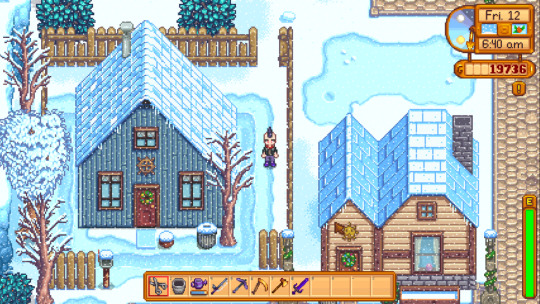
Even to a person who has not played Harvest Moon or older pixel games, Stardew Valley's art is very pleasing to the eye. The vibrant colors change through seasons and every seasons has its own unique feeling to it, brought to life with the nature's foliage and nicely composed music. To an old player who is familiar with Harvest Moon, it reminds me of the older games in the series and their innocence and relaxing flow, that some of the newer games lack.
As said, the music in Stardew Valley compliments the elements and feelings it is trying to get through during events, seasons or in specific areas like the mines. A casual player benefits largely from keeping the audio on while playing. Along with music, the sound design of Stardew Valley is good, though some of the SFX sound like odd squishy steps. Nevertheless, they do add a certain charm after the first few times of hearing them and the player comes to associate said sounds with the game, and I have to admit, I did laugh when I heard a pig make a noise for the first time.
What I love the most about Stardew Valley's aesthetics is its colors and the freedom it gives to the player. I have seen several players in the Stardew Valley community share their beautifully organized farms that the game allows the player to make, should they choose to spend their time on it. There is also a customization option for the avatar, with the player being able to choose and craft clothing for the protagonist and change their color as they will. This element allows the player to write their own story and to truly immerse into the beautiful world of Stardew Valley.
Co-op
There is also a co-op mode available for Stardew Valley. One of the farm types, The Four Corners, even encourages playing the game with your friends and while the gameplay doesn't differ that much from the single-player game, sharing the experience is fun as expected. It is to be noted however, that a single-player mode cannot be converted to a multiplayer server, so in every new multiplayer game, the player must start from a scratch again.
The other players live on the land of the host in smaller cabins that they can upgrade and get married in. Two players cannot get married to the same character, however, and there might be some amusing incidents where you are in the middle of a date with your sweetheart and you can see your best friends avatar running in the background hacking trees.
Two player can also get married to each other by crafting a wedding ring, but this hardly changes any gameplay. Still, it is a nice choice to have if someone chooses to share a Stardew Valley server with their real life partner.
Verdict
Stardew Valley is a beautiful, charming game, either for casual players or just people who enjoy relaxing while doing mindless collecting and helping others. It's fun, it's simple and it still manages to interest me after 150 hours of gameplay, due to its active community and ConcernedApe's passion for his project and improving it even after 4 years. To former Harvest Moon players, Stardew Valley is a must try at least once. It is defiantly not the same as Harvest Moon, but it does work as food for those waiting for western release dates, or as its own experience entirely. There is no denying that the love and passion put into this little game shines through it and manages to fill the heart of the player.
4 notes
·
View notes